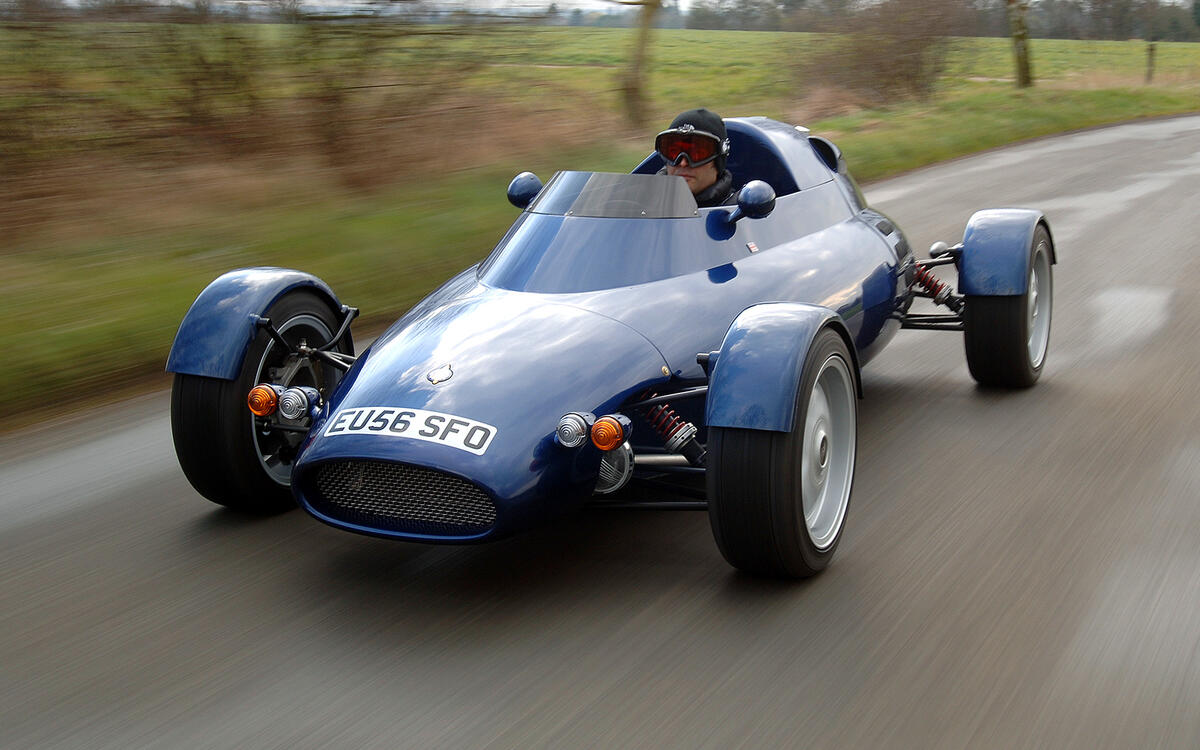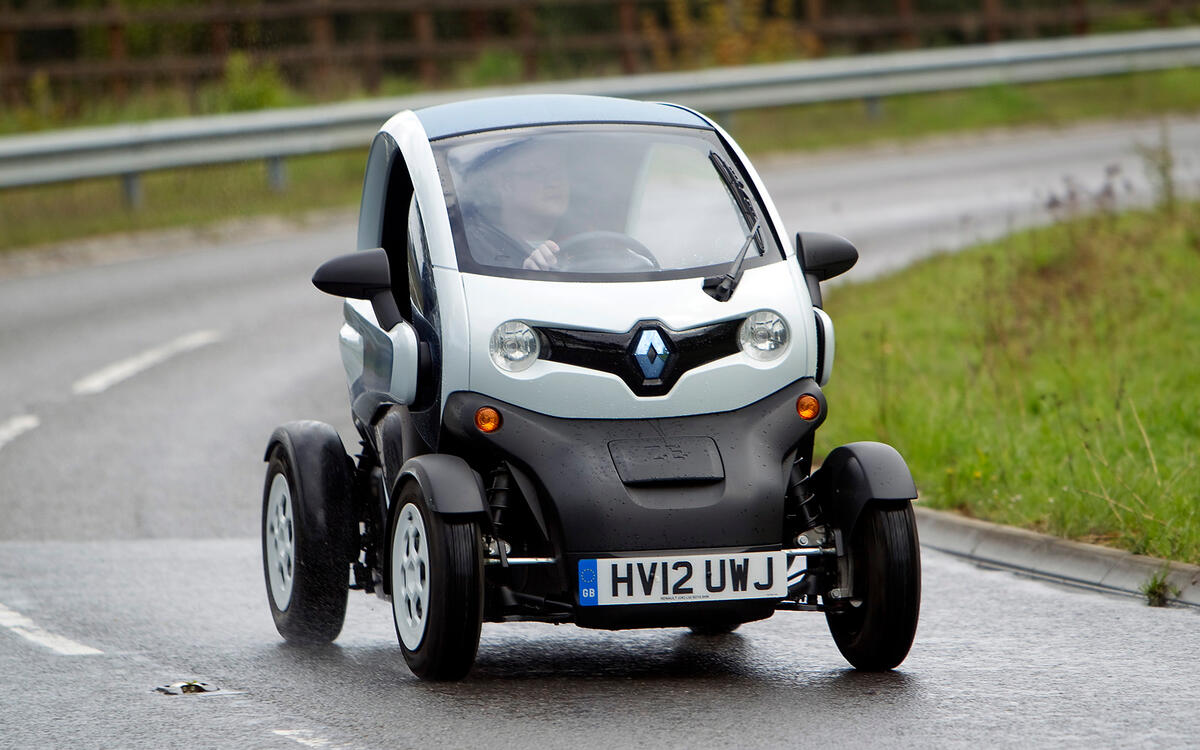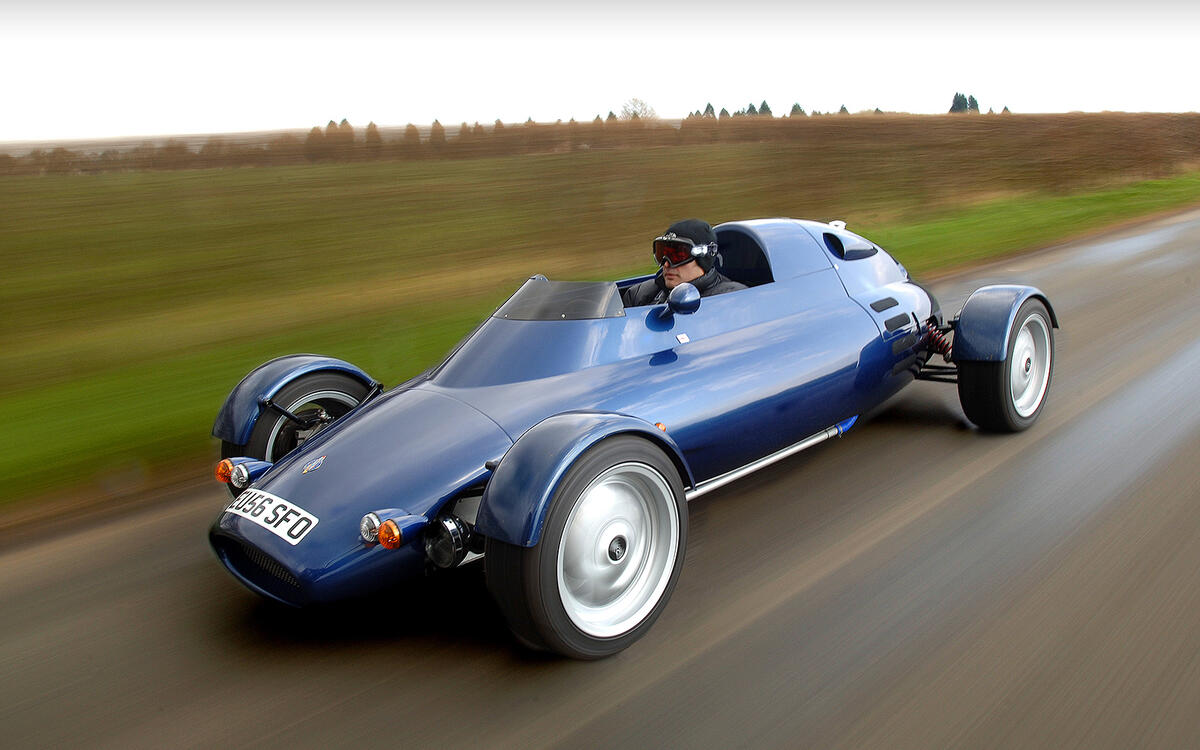 Slide of
Slide of
Weight reduction has become a major concern for modern car makers, but shedding the pounds and kilos has long been an obsession for many.
Less weight means better efficiency and improved performance, so the mantra of add lightness makes perfect sense. We’ve listed some of the most notable lightweight machines in descending order of weight. All figures are the manufacturers’ claimed official figures for kerb weight:
 Slide of
Slide of
Audi A2 (895kg)
Audi’s A2 of 1999 brought aluminium construction to the masses, or at least the well-heeled middle classes due to its £13,095 starting price, perhaps £22,000 in today’s money. For a city car, that was a lot, but then the A2 was no ordinary car and aimed to give good fuel economy by maximising aerodynamic efficiency coupled to low weight. It worked and the 1.4-litre diesel variant gave 65.7mpg.
However, Audi wasn’t done and introduced the 3L model, which meant it could cover 100km, or 62 miles, on just three litres of diesel. It managed this with a 1.2-litre turbodiesel engine with a block made from aluminium to reduce weight. More heft was lost with thinner door glass, lighter seats and unique magnesium alloy wheels with four bolts instead of five. Along with a slimmed down bodyshell, the A2 3L weighed in at 825kg. You can pick up a decent A2 from £850.
 Slide of
Slide of
Alfa Romeo 4C (895kg)
Weight reduction was at the heart of the Alfa Romeo 4C from its very inception, which included a carbon fibre tub as the base that weighs only 65kg. To this amazingly light core were other components specifically designed with low mass in mind, such as a 1742cc turbocharged engine that was 22kg lighter than the petrol four-cylinder used in the Giulietta. Even the glass was 15% thinner than normal to cut weight.
The result of Alfa’s fastidious approach was a sports car that came in at 895kg dry. However, even this dedication and stunning looks were not enough to persuade many to part with their cash for the coupe or a further £7000 for the Spider when a Porsche Cayman was a more rounded, if heavier, car. Rarity has helped it retain its value and you won’t pick up a used 4C for less than £32,000.
 Slide of
Slide of
Toyota iQ (845kg)
Toyota described the iQ as a revolutionary approach to the city car and cited its low weight of 845kg as part of the evidence. Certainly, compared to other four-seat urban runarounds, the iQ was dainty and compact, but its cleverness didn’t really catch on. The original concept was a study in miniaturisation, but the production model didn’t quite deliver on the promise of a Tardis-like interior.
None of this stopped Aston Martin turning the iQ into its own Cygnet as a means of reducing the company’s overall CO2 footprint for its model range. Size was also no barrier to Aston charging £30,995 for the Cygnet, which netted buyers a luxury leather interior and bespoke paint job. However, all of that glamour boosted the weight to 988kg. A Cygnet now will cost you from £30,000, so a Toyota iQ from £2000 seems fairer value.
 Slide of
Slide of
Volkswagen XL1 (795kg)
Volkswagen described the XL1 as a Super Efficient Vehicle as it could offer 313mpg and produce 24g/km from its 800cc twin-cylinder turbodiesel. Achieving these numbers meant low weight was a priority of its design, which used a Carbon Fibre Reinforced Polymer for much of the body to get the figure down to 795kg.
The obsession with keeping weight to a minimum also extended to using magnesium wheels, ceramic brake discs and aluminium for the brake calipers and steering components. Due to its specialist nature, only 250 XL1s were produced, so finding one will be the first hurdle. The next is the likely £100,000 asking price.
 Slide of
Slide of
Peugeot 205 Rallye (794kg)
Any Peugeot with the Rallye name attached is special, but the 205 version is where it all started. Built by Peugeot-Talbot Sport, this back to basics machine was shorn of all unnecessary weight, which meant no soundproofing and even the wiring loom was pared down to the minimum to make the car function.
The result of this fastidious attention to detail resulted in a car weighing 794kg with a 102bhp 1.3-litre engine. It used the same suspension as the 205 GTI front and back, so this featherweight model was a handling delight. Many have been raced, rallied or rusted to death now, so finding a good one is tricky but well worth the effort from £10,000.
 Slide of
Slide of
Suzuki Cappuccino (725kg)
The Suzuki Cappuccino had no option but to be light as it was designed to meet Japan’s stringent kei car regulations. The compact dimensions lent themselves to a low weight car and the two-seat roadster came in at just 725kg, which was more than 200kg less than a Mazda MX-5.
Power for the Cappuccino came from an equally light 657cc turbocharged three-cylinder engine making 63bhp. That meant 0-60mph in 8.2sec to be on a par with the MX-5. However, the diminutive Suzuki was just too small for most buyers outside of Japan and only 1110 found homes in the UK when officially imported. Many grey imports have since arrived and you can own a Cappuccino from £3000.
 Slide of
Slide of
Lotus Elise (723kg)
More than any other car, the Lotus Elise has done more to fly the flag for lightweight over big power to deliver a great drive. The Elise was a back-to-basics design for Lotus, borrowing its philosophy from the original Elan. It worked and the Julian Thomson-penned car was an instant hit when it launched in 1996.
So much of the Elise’s appeal was due to its 723kg weight in its simplest form. Later models offered more power, equipment and, sadly, weight, yet it’s the first versions that deliver the key message of lightness improving the breed most impressively. To enjoy that sensation today, a good Series 1 Elise will cost from £13,000.
 Slide of
Slide of
Smart Fortwo (720Kg)
It’s a measure of how far vehicle safety and legislation had progressed by the late 1990s that Smart’s compact Fortwo weighed in at 720kg. However, it was easy to see where this heft had come from with the Tridion safety cell exposed as part of the car’s design and there to protect its two occupants.
The small size of the Smart helped to make it much lighter than most other city cars and the Fortwo’s party piece was it could park nose in to the kerb without its rear poking into traffic. More of a concern for many drivers was the short wheelbase that made for a choppy ride and the wheezy three-cylinder engines. If that doesn’t bother you, a serviceable Smart Fortwo can be yours from £750.
 Slide of
Slide of
Daihatsu Charade (690kg)
Superminis don’t get much simpler than the 1981 Daihatsu Charade. Its body was styled with straight lines and keeping equipment to a minimum resulted in a weight of 690kg for the bare bones basic model. Sadly for owners, this no-frills approach also extended to minimal rust-proofing and the Charade would quickly embark on its own weight reduction programme by rusting away.
Later generations of Charade overcame this problem and the 99bhp GTti model made for a fine hot hatch that could crack 0-60mph in 7.7sec. This was helped by the 993cc turbocharged three-cylinder engine being the first production motor to break the 100bhp-per-litre threshold. Find a GTti today and it will set you back from £5000.
 Slide of
Slide of
Citroën AX (640kg)
The Citroën AX was the spiritual successor to the French firm’s 2CV, even if the Tin Snail lasted for four more years after the launch of the AX. Like its famous elder, the AX used lightness to make the most of its modest engines and with just 640kg to lug about in its most basic form, the AX was reasonably nippy and handled well.
At 722kg, the AX GT was quite a bit heavier than most other models in the range, but this superb little hot hatch quickly gained a reputation for its giant-slaying ability through the corners. A mere 85bhp from its 1.4-litre engine was just enough if you kept your foot planted, but many buyers were deterred by the flimsy cabin that was a result of saving weight and costs. Even so, it’s regarded as a classic now and prices are climbing, so expect to pay from £5000 for a good one.
 Slide of
Slide of
Clan Crusader (613kg)
Former Lotus employees Paul Haussauer and John Frayling designed the Clan Crusader as an affordable sports car in a similar vein to the Elan. It used the Hillman Imp’s alloy engine and a glassfibre body over a backbone chassis to keep weight down to 613kg. Even with a standard Imp engine’s modest 51bhp, it made for decent performance.
Plenty of owners tuned their cars and the Clan was popular in many branches of motorsport. It is also unique in being the only car ever certified for racing use with a roll bar made from rope. This was bonded into the bodyshell and was tested by turning the body upside down with a skip on top filled with water to prove its structural integrity. Seek out this quirky sports car and it will cost around £5000 for the best.
 Slide of
Slide of
Lotus Elan (585kg)
If ever a company has built its reputation on creating featherweight cars, it’s Lotus. The Elan was not the firm’s lightest car by any means, with the Seven and 11 models both with less weight. However, the Elan was the car that caught the imaginations of buyers, helped along by its 585kg being propelled by a feisty twin cam engine.
Later Elan models grew in sophistication and refinement, which came with a weight penalty. The heftiest of the bunch was the four-seat +2 that was also longer to make room for the rear seats. Even so, this model still only tipped the scales at 845kg. A decent +2 can be had from £20,000, but you’ll to double that for a good two-seat version.
 Slide of
Slide of
Gordon Murray T25 (575kg)
Applying all of this considerable design knowledge from Formula 1 to the city car meant Gordon Murray’s T25 was never going to a portly machine. With an all-up weight of 575kg, it pioneered a different approach to small car design that championed low weight not just for improved fuel efficiency but also extended component life.
Power for the T25 was supplied by a modified version of the Smart Fortwo’s 660cc three-cylinder motor and it worked well in the T25. 0-60mph took 16.2sec, but on the move the lack of mass meant the T25 felt nippier in town than that figure suggested. The T25 did not make into production, so the only examples reside with Gordon Murray.
 Slide of
Slide of
Mini 850 (571kg)
The original Mini was built down to a price and a weight. It was so pared back that Ford famously bought one, stripped it and concluded the British Motor Corporation (BMC) must be selling its new wonder car at a loss. Ford was right and this was despite BMC using as little metal as it could get away with, hence the 571kg weight.
A short while after the Mini had been launched in 1959, BMC decided durability was a good thing and made the Mini from thicker steel. This added 50kg to the weight, which made earlier versions popular with racers who wanted the lightest shell possible. Today, a very early Mini is very sought-after and decent examples start from £20,000.
 Slide of
Slide of
Morgan 3 Wheeler (525kg)
This Morgan is an immediate advantage over most lightweight cars by having only three wheels. This means an all-up weight of 525kg for the modern interpretation of the Malvern firm’s trike. The 525kg weight is for the Euro 3 version that is quicker, covering 0-62mph in 6.0sec to the Euro 4’s 7.0sec due to its 585kg.
The Euro 3 model also comes with a more potent 82bhp version of the 2.0-litre V-twin engine as the Euro 4 is limited to 68bhp. However, both look rather hefty when compared to an original 1920’s Super Sport at 432kg. Look for a modern 3 Wheeler and used examples begin at £25,000, while a vintage Super Sports will require at least £45,000.
 Slide of
Slide of
Caterham Seven Superlight R500 (506Kg)
Even by Caterham standards, the Superlight models are skimpy when it comes to treading on the scales. The Superlight R500 comes in at 506kg, which is not the lightest version as the earlier model weighed some 46kg less. However, the more potent Ford engine endows this model with better performance so gets our vote.
A 2.0-litre Ford Duratec engine offers up 263bhp, so the R500 name is something of a misnomer as this car produces 520bhp per tonne. That was better than a Bugatti Veyron when the Superlight R500 was launched and saw it from rest to 60mph in just 2.9sec. Such pace means this R500 is always in demand and prices start from £40,000.
 Slide of
Slide of
De Tomaso Vallelunga (500kg)
Despite its exotic name and looks, the De Tomaso Vallelunga was powered by nothing more than a Ford Cortina’s 1498cc four-banger. However, this motor was tuned to a healthy 135bhp, which meant it was more than quick enough for the 500kg Italian machine.
Aluminium bodywork and a spaceframe chassis helped to keep the weight down to that very low number. It also helped see the Vallelunga from 0-60mph in 6.0sec and on to a claimed 155mph. Today, this very pretty lightweight sports car will need £300,000 if you can find one of the 55 built for sale.
 Slide of
Slide of
Fiat 500 (500kg)
The Fiat 500 was named after its half litre engine, actually a 499cc unit but we won’t quibble, yet it could also have been christened due to its weight. At bang on 500kg, the baby Fiat made the most of its modest two-cylinder motor’s 18bhp to carry up to four passengers.
Launched before the Mini, the 500 outdid its British rival for the compactness of its dimensions, engine and weight. It also went on to sell almost 3.5 million units, so it had the sales measure of its key rival too. Today, a pristine 500 will cost you as much as £20,000, which is almost the only large thing about this car.
 Slide of
Slide of
Renault Twizy (450kg)
Keeping the weight down was essential to the success of the Renault Twizy as it was built to meet the requirements of a Heavy Quadrimobile. With a kerb weight of 450kg in its original and most basic form, the Twizy managed this and also met the legislation’s demand for a power output no greater than 15kW.
Renault employed aluminium for the main frame of the Twizy to keep weight down and counter the heft of the battery that is positioned under the seats. This keeps the mass of the car centralised and gives it a low centre of gravity, offsetting the car’s narrow track to make it stable on the road. You can enjoy this open-sided oddity from £3500.
 Slide of
Slide of
LCC Rocket (370kg)
If you’re going to call your business the Light Car Company, you’d better deliver the goods. Luckily, this firm was headed by racing driver Chris Craft and Gordon Murray. Their plan was to take Colin Chapman’s mantra of lightweight to its extreme conclusion, so the aptly named Rocket had a spaceframe chassis, carbon fibre wings and glassfibre body. It tipped the scales at just 370kg, making a Lotus Elise look portly.
Power for the Rocket came from an equally lightweight engine borrowed from a Yamaha motorcycle. This 1002cc motor provided 143bhp, so the Rocket had a power-to-weight ratio on a par with a Ferrari F40, and acceleration to match thanks to 0-60mph in 4.4 seconds. Only 45 Rockets were made and they are very collectible now. Gordon Murray still has his and you’ll need around £75,000 to join this exclusive club.
Weight is the enemy for so many important automotive characteristics like handling and performance - but for these cars, not so much
Advertisement











































